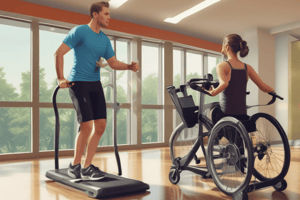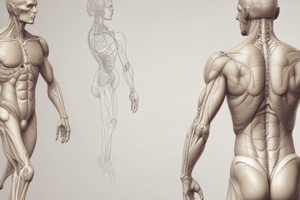Podcast
Questions and Answers
What does the Timed Up and Go (TUG) test specifically measure in older adults?
What does the Timed Up and Go (TUG) test specifically measure in older adults?
- The static balance while standing
- The time taken to complete a series of mobility tasks (correct)
- The distance covered in a six-minute walk
- The overall physical strength of the individual
Which assessment is primarily concerned with evaluating fall risk in older adults?
Which assessment is primarily concerned with evaluating fall risk in older adults?
- Six-Minute Walk Test (6MWT)
- Berg Balance Scale (BBS) (correct)
- Timed Up and Go (TUG) test
- Functional Reach Test
What is the primary purpose of the Six-Minute Walk Test (6MWT) in the context of older adults?
What is the primary purpose of the Six-Minute Walk Test (6MWT) in the context of older adults?
- To assess fear of falling
- To measure endurance and functional exercise capacity (correct)
- To determine cognitive function while walking
- To evaluate muscle strength in the legs
Which statement accurately describes a component of the Timed Up and Go (TUG) test?
Which statement accurately describes a component of the Timed Up and Go (TUG) test?
Which of the following assessments does NOT involve timed measurements?
Which of the following assessments does NOT involve timed measurements?
Flashcards are hidden until you start studying
Study Notes
Standardized Assessments for Older People's Mobility
- Timed Up and Go (TUG) test: Evaluates mobility by timing how long it takes an individual to rise from a seated position, walk a short distance (typically about 3 meters), turn around, return to the seat, and sit down.
- Berg Balance Scale (BBS): A comprehensive tool used to measure balance and assess the risk of falls. It consists of 14 tasks that evaluate various static and dynamic balance aspects.
- Six-Minute Walk Test (6MWT): A test designed to measure an individual's functional exercise capacity by determining how far they can walk within six minutes, providing insight into their cardiovascular and muscular performance.
Studying That Suits You
Use AI to generate personalized quizzes and flashcards to suit your learning preferences.




